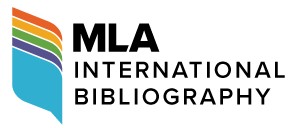Abstract
Drawing from the traditional binary thinking of subject-object division and confrontation, the modern interpretation of “artistic appeal and rhythmic vitality” since the twentieth century considers it either as an aesthetic feature or the overall spirit of the artwork, or as the painter's inner harmony and resonance, failing to fully realize that the ideal effect of “artistic appeal and rhythmic vitality” can only be generated by the two-way communication and resonance between the creator and the object. In the light of the aesthetics of atmosphere, “artistic appeal” is a special category or an advanced state of atmosphere that arises from the intentional relationship established by the simultaneous presence of the creator and the object, as well as the creator's integral representation of the object's intuitive visualization and depiction with sublime brushwork and ink in a state of mind that forgets both the object and the self. It embodies the highest artistic realm that combines the aesthetic sense of the atmosphere in the artwork with the creator's life force and sentiment. The unity of humanity and nature is the philosophical foundation of “artistic appeal and rhythmic vitality”, the key to distinguishing it from and elevating it above “atmosphere”, and also serves as the reason why “atmosphere” cannot directly replace “artistic appeal and rhythmic vitality”, nor can the two be simplistically interchanged or confused.
Keywords
artistic appeal, atmosphere, intentionality, in-betweenness, unity of humanity and nature
First Page
168
Last Page
177
Recommended Citation
Li, Lei. 2025. "Atmosphere and Artistic Appeal (Qi Yun): An Unfinished Reflection on the Modern Interpretation of “Artistic Appeal and Rhythmic Vitality” from the Perspective of Atmosphere Aesthetics." Theoretical Studies in Literature and Art 44, (6): pp.168-177. https://tsla.researchcommons.org/journal/vol44/iss6/17
Included in
Aesthetics Commons, American Studies Commons, Chinese Studies Commons, Classics Commons, Comparative Literature Commons, Film and Media Studies Commons, Modern Literature Commons, Theatre and Performance Studies Commons


